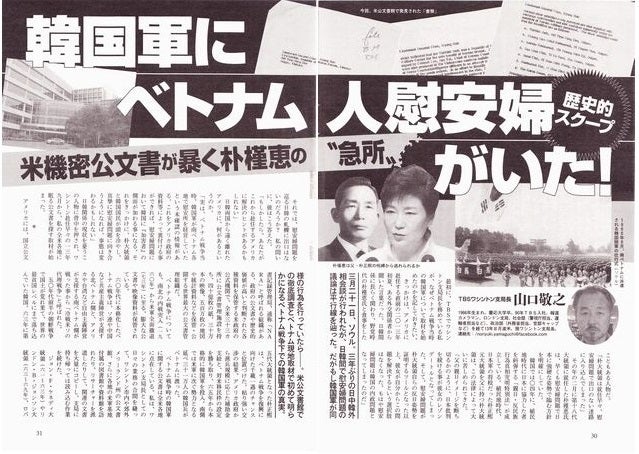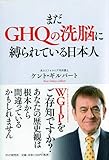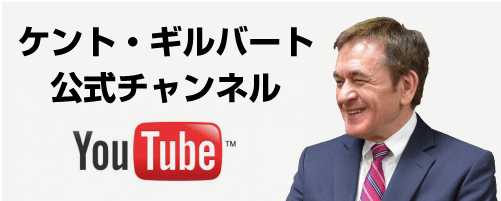The ROK Army Used Vietnamese Comfort Women Part2(No restrictions on retransmission)
韓国軍にベトナム人慰安婦がいた!二カ国語
Part1(拡散自由)
今回、米国の公文書によって初めてその存在が明らかになった、サイゴンの「韓国軍慰安所」とは、一体どのように運営されていたのか。
How was the ROK army comfort station in Saigon that has come to light through a U.S. archive document operated?
すぐにでもホーチミンに飛んで現地取材したかったが、ワシントン支局長という立場上長期間アメリカを離れる事は難しい。そこで私は、アメリカにトルコ風呂の実態やこの施設について知っている人物がいないか、改めてリサーチを開始した。
I would have wanted to fly to Vietnam immediately to investigate, but as the Washington Bureau chief, it was difficult to take leave from my job for an extended period. Therefore, I began research to find out if there was anybody in the U.S. who was knowledgeable about the sex industry in Saigon at that time or who knew about the establishment in question.
まず、当時の米軍関係者とベトナム系アメリカ人に照準を絞って、アメリカにおけるベトナム関連のネットワークを探した。関連のフォーラムに出席したり、米政府の退役軍人省のデータベースを調べたりして、連絡先の判明した関係者に虱つぶしに手紙やEメールを送った。また、サイゴンに駐在経験のある人物の証言を得る為、ワシントン郊外バージニア州のベトナム人集住地区の新聞に情報提供を求める広告を出した。すると、ほどなくして広告を見たアメリカ人からEメールが来た。
I focused first on former U.S. military personnel and Vietnamese-Americans and looked for Vietnam-related networks in the U.S. I attended the relevant forums, looked into the databases of the U.S. government’s Department of Veteran Affairs, and sent letters and e-mails to people with known contact information who might know. I also placed an advertisement in a newspaper in the Vietnamese community in Virginia outside Washington, asking for information. Shortly after, an American who saw the ad sent me an e-mail.
ハンス・イケス氏(70)。六〇年代後半にアメリカの通信インフラ会社からサイゴンに派遣され、その後数年間にわたってベトナムとアメリカを往復したというイケス氏は、今はバージニア州東部で年金生活を送っているが、若くして訪れたサイゴンは印象が強烈だったという事で、当時の街の様子を饒舌に語ってくれた。しかし、トルコ風呂について質問が及ぶと、周りを憚るように声を潜めた。
Hans Ekes [spelling not confirmed], 70, was sent by an American communication infrastructure company to Saigon in the late 1960s. Ekes, who traveled back and forth between Vietnam and the U.S. for several years, is a pensioner living in eastern Virginia. He talked at length about what Saigon was like, since the city made a strong impression on him as a young man. However, when we asked about the Turkish Bath, he suddenly lowered his voice and became wary of people around us.
「『トルコ風呂』は、当時サイゴンにいた人の間では、『射精パーラー』(Steam and Cream Parlor)と呼ばれていました。若いベトナム人女性から性的サービスを受けることが出来たからです」
“At that time, people in Saigon called the Turkish Bath a ‘steam and cream parlor’ because it was a place where you could avail yourself of the sexual services of young Vietnamese women.”
トルコ風呂の実態については徐々に明らかになってきたが、韓国軍の慰安所の存在を確実に知っている人物にはなかなか辿り着けなかった。
It became clear from the statements that the Turkish baths in Saigon at that time were another name for brothels, like in Japan in the past. However, I had difficulty finding someone who knew about the ROK army’s comfort station.
作業を続けて半年程経った頃、ベトナム戦争を戦った経験のある米軍OBからEメールが送られてきた。
About six months after I started the research, I received an e-mail from a U.S. veteran who fought in the Vietnam War.
アンドリュー・フィンライソン氏(71)。米海兵隊の歩兵部隊長として六七年から二年八カ月に渡ってベトナム戦争を戦い、サイゴンをはじめ南ベトナム各地を転戦。退役後は紛争地域の軍事顧問団として活躍し、ベトナム戦争に関する著作も発表している研究者だ。早速インタビューを申し込むと、快く応じてくれた。
Andrew Finlayson, 71, served with the U.S. Marines’ infantry unit in the Vietnam War for two years and eight months from 1967 and fought in various locations in South Vietnam. After leaving the military, he served in military adviser groups in conflict areas. He is a researcher and has published books on the Vietnam War. He agreed to be interviewed.
「休息と回復期間」の兵士
Soldiers’ “Rest and Recuperation”
朝晩の冷え込みが厳しくなってきた昨年初冬、アメリカ東海岸バージニア州の小さなホテルに現れたフィンライソン氏は、黒いタートルにジャケットを着た、温厚な容貌の紳士だった。だが、衣服越しにも明らかな分厚い胸板と鋭い眼光が、元海兵隊幹部という肩書きを裏付けていた。
In early winter last year, when it was becoming cold in the mornings and evenings, Finlayson, wearing a black turtleneck sweater and a jacket, appeared at a small hotel in Virginia. He looked like an affable gentleman but his thick chest and piercing eyes disclosed that he was a former marine officer.
その体躯とはうらはらに、フィンライソン氏の語り口は、研究者だけあってあくまで知的で静かだった。
Contrary to his looks, Finlayson, a researcher, spoke quietly with the manner of an intellectual. He said:
「韓国軍の慰安所は、確かにサイゴンにありました。よく知っています」
“There was indeed a ROK army comfort station in Saigon. I knew about it very well.”
南ベトナム各地の農村の偵察部隊の責任者として、韓国軍との連絡調整に従事した経験があり、韓国軍の実情に詳しかった。
Finlayson was responsible for reconnaissance teams in the rural villages in South Vietnam, so he was involved with liaison with the ROK army and was familiar with the situation at that time.
「米軍司令官が指摘している韓国の慰安所とは、韓国軍の兵士に奉仕するための大きな売春施設です。韓国兵士にセックスを提供するための施設です。それ以外の何ものでもありません」
“The ROK army comfort station cited by the U.S. military commander was a major sexual facility for the South Korean soldiers. It was precisely a facility for providing sexual services to these soldiers.”
フィンライソン氏によれば、問題の施設は、トルコ風呂としてはかなり大規模なものだが、サイゴン市内の別の場所には、これよりもさらに大きい慰安所があったという。施設は内部が多くのブロックに分かれていて、一区画に二十人前後のベトナム人女性が働かされていたという。
According to Finlayson, it was a Turkish bath of an enormous size. However, according to Finlayson, there was an even bigger facility in another location in Saigon. These facilities were divided into blocs inside. Around 20 Vietnamese women worked in each bloc.
韓国軍が、なぜサイゴン市内に大規模な慰安所を作らなければならなかったのかを尋ねると、フィンライソン氏は即座にこう答えた。
When asked why the ROK army had to set up large comfort stations in Saigon, Finlayson responded immediately:
「韓国兵がベトナム女性をレイプしたり、個別に性的関係を持ったりするのを防ぎたかったからです。また、韓国軍将校が農村で女性を売春婦として囲う恐れもあり、こうした行為はベトナム社会と韓国兵の間で政治的トラブルに発展する危険性がありました」
“This was to prevent South Korean soldiers from raping Vietnamese women or having individual sexual relations with them. There was also concern that South Korean officers might keep prostitutes as mistresses in Vietnamese villages. These things might develop into political trouble between the Vietnamese society and the ROK army.
「また性病の蔓延も重大な懸念でした。慰安所ならば慰安婦の健康を管理できます。当時現地では性病が大きな問題で、特に梅毒が蔓延していました」
“Venereal diseases were also a serious concern for the armed forces. It would be possible to manage the health of the comfort women at the comfort stations. At that time, venereal disease was a serious problem in South Vietnam. Syphilis was particularly rampant.”
ベトナム戦争当時、一定期間前線で戦った韓国軍の兵士は、「休息と回復期間(Rest & Recuperation)」として戦地を離れ、サイゴンで休養する事を許された。この「静養中」の韓国兵がサイゴンや近郊の農村でトラブルを起こしたり、性病に罹ったりしないよう、韓国軍が韓国兵のための慰安所を、サイゴン市内に設置したというのだ。
During the Vietnam War, South Korean soldiers who fought on the front lines for a certain period of time were allowed to leave the battlefield for R&R (rest and recuperation) in Saigon. Apparently, the ROK army set up comfort stations in Saigon for the soldiers so that they would not make trouble in Saigon and the nearby villages while on R&R and to prevent the spread of venereal disease.
では韓国兵士の相手をさせられたベトナム人の慰安婦とは、どんな女性たちだったのか。
Who were the Vietnamese women made to serve the South Korean soldiers?
フィンライソン氏は、そのほとんどがベトナム各地の農村の少女だったと断言した。
Finlayson said they were almost invariably young girls from the rural villages in Vietnam.
「こうした売春施設で働いている女性はほぼ例外なく農村部出身のきわめて若い女性でした。
“Women who worked in these brothels were almost invariably very young girls from the rural areas.
彼女達が施設に来た理由は様々です。貧困のために家族に売られてきた少女もいたし、自らの意思で来た女性もいた。彼女たちは、職を失って慰安婦となった。 騙されて連れてこられた女性も当然いたでしょう」
“They were there for various reasons. There were girls who were sold by their families due to poverty. Some went there of their own free will. They lost their jobs and became comfort women. For sure, there were also women who were deceived and brought there.”
同書簡には、この施設は韓国兵専用の慰安所として設立されたが、米軍など友軍の兵士も特別に利用する事ができ、その場合は一回につき三十八ドルが請求されたと書かれている。
The letter mentioned earlier wrote that while this facility was set up as a comfort station for the sole benefit of the Korean troops, U.S. soldiers and members of other allied forces were given special access, in which case, they were charged $38 each time. Finlayson explained why this happened.
施設に行った事があるという別の米軍OBは、匿名を条件に次のように証言した。
A U.S. veteran who had once gone to the facility provided the following information on the condition of anonymity:
「ほとんどが十代の少女だった。十六歳だという少女もいたし、もっと幼く見える女の子もいた。こうした農村出身の素直で華奢な少女に夢中になる兵士も多く、こうした者は『Yellow Fever(黄熱病)』と揶揄されていた」
“Most of the women who worked in the Turkish baths were girls from the rural villages under 20 years old. Some said they were 16 and others looked even younger. Many soldiers went so gaga over these simple petite girls that they were ridiculed as having the ‘yellow fever’.”
ニュージャージー州に住む七十代前半のこの人物は、問題の慰安所は隣接する複数の家屋を併せた大規模な施設で、通りの向かい側にも別棟があったと語った。その後の調査で、この施設が入っていた建物はホーチミン市内に現存する事が確認されたが、隣接する地番が一体となって雑居ビルを構成している点など現地の状況は完全に一致していた。ベトナム人慰安婦の多くが年端も行かぬ少女だったという驚くべき証言だったが、十分に信頼しうると感じた。
This man in his 70s and living in New Jersey said that the comfort station in question was a large-scale facility including several adjacent buildings, and an annex across the street. On later investigation, I confirmed that the building housing this facility actually still exists today, and that this facility was operated together with two adjacent buildings and there was also an annex across the street, matching his description. I felt that his incredible account that the majority of the Vietnamese comfort women were minors was reliable.
韓国軍慰安所が友軍の兵士を受け入れた理由については、フィンライソン氏はこう説明した。
Finlayson gave the following reasons for why friendly forces were accepted at a Korean Comfort Women facility.
韓国の国家としての意思
South Korean Government Policy?
「『休息期間』でサイゴンに滞在する韓国兵の数は時期や季節によってばらつきがありました。このため、そもそもは韓国兵専用として設立された施設ですが、韓国兵の数が少ない時期に、友軍の兵士も受け入れるようになっていったのです」
“There were seasonal fluctuations in the number of South Korean soldiers coming to Saigon for R&R. Therefore, this facility set up for the exclusive use of ROK troops came to accept soldiers of the allied forces during low seasons.”
私が投げかけるあらゆる質問に対して、フィンライソン氏の答えは簡潔かつ明快だった。そしてその解説は、それまでに読み込んだ公文書の内容や関係者からの聞き取りと、ぴったりと一致していた。
Finlayson was unequivocal in answering all my questions. His explanation also corresponded completely with what I had learned from archive documents and interviews with informed sources.
もちろん、韓国軍による慰安所設置の経緯、規模、運営実態など、今後解明されなければならない事は多い。しかしフィンライソン氏への一時間半に渡るインタビューを終え、ベトナム戦争当時「都市型慰安所」とでもいうべき、これまで知られていなかった施設が存在したという点については、確信を持つに至った。
After the 90-minute meeting with Finlayson, I felt that several of the questions I had had throughout my 15 months of information gathering were answered. For sure, many facts still need to be uncovered regarding how the ROK army set up the comfort stations, their size, and how they were operated. However, there is no doubt that what could be called “urban comfort stations” set up by the ROK army existed in Saigon during the Vietnam War.
では、韓国軍の慰安所経営について、ベトナムの人々はどう受け止めるのだろうか。南ベトナム政府の元官僚で現在はワシントン郊外に住むグエン・ゴック・ビック博士に話を聞く事ができた。
So, how do the Vietnamese feel about the ROK army’s comfort stations? I asked Dr. Nguyen Goc Bich, a former Vietnamese government official who now resides in Washington.
ビック博士とは、昨年夏ワシントンで開かれたベトナム戦争五十周年の記念フォーラムで出会った。中部の港湾都市ダナンで生まれサイゴンで育ったビック博士は、ベトナム戦争が本格化する直前の五八年にアメリカに渡り、コロンビア大学や京都大学などに留学した後、複数のアメリカの大学で教鞭をとったアジア文学の研究者だ。
I met Bich at a forum commemorating the 50th anniversary of the Vietnam War in Washington last summer. He was born in the port city of Danang in central Vietnam and grew up in Saigon. He immigrated to the U.S. in 1958, shortly before the Vietnam War intensified. He is a scholar who taught Asian literature at several U.S. universities after studying at Colombia University and Kyoto University.
ベトナム戦争時の韓国軍による虐殺などの蛮行については詳しく知っていたが、慰安所の事は知らなかったという。ビック博士は小柄で白髪の温厚な紳士だが、問題の書簡を読んでもらうと見る見る顔つきが厳しくなった。
He was familiar with the killings and other atrocities committed by the ROK army during the Vietnam War but did not know about the comfort stations. Bich is a pleasant gray-haired gentleman, but after reading the letter in question, his facial expression hardened.
「韓国軍がベトナム人に対して酷いことをしたのであれば、うやむやにすることは絶対にできません」
“If crimes and hideous acts were committed, evil is evil whether Japanese, Koreans, Vietnamese or Americans were responsible.”
アメリカ在住のベトナム人団体の議長も務めるビック博士は、ベトナム人について「二千年前の出来事でも昨日のことのように話す民族」であるという。
Bich, who also chairs an organization of Vietnamese in America, said that the Vietnamese people “talk about events 2,000 years ago as if they happened yesterday.”
「犯罪や酷い行為が行われたのならば、それは日本人だろうが韓国人だろうがベトナム人だろうがアメリカ人だろうが、悪いものは悪いのです」
“If the South Korean army had indeed done those terrible things to the Vietnamese, our people will absolutely not overlook this fact.
「我々は良心に従って韓国と向き合い、調査し、交渉をして、白黒はっきりつけなければならない。真実が分からない限り、いつまでも問題は解決しないし、国家間の関係を害することになる」
“We must talk to the ROK, conduct investigations, negotiate, and find out the facts following our conscience. This issue cannot be resolved and will continue to poison bilateral relations unless we find out the truth.”
ビック博士が最も強調したのが、慰安所設置に踏み切った、韓国の国家としての意思だ。
Bich was most interested in whether the setting up of comfort stations was a ROK government decision.
「一部の不良がやっていた違法行為でなく、韓国政府が政策としてやっていたのなら、看過されるべきではない。国家が関与したこういう行為は、決して正当化する事はできないのです」
“If this was not an act by a bunch of bad guys and was the result of an ROK government policy, it should not be overlooked. There is no way to justify such an act if the state was involved.”
「軍の規律維持」と「性病防止」のために、韓国政府と韓国軍が組織的に慰安所を設置、運営したのであれば、そこには明白な国家の意思が存在することになる。そしてその構図は、韓国政府が繰り返し厳しく批判する日本軍の慰安所と全く同じだ。
If the ROK government and army were involved in the systematic operation of comfort stations for the sake of maintaining the armed forces’ discipline and preventing venereal disease, this was certainly a government action. And this was a system that was exactly the same as the Japanese Imperial Army’s comfort stations that the ROK government has criticized relentlessly.
だがそれもそのはず、当時の大統領・朴正煕は、日本の陸軍士官学校を卒業し、太平洋戦争では日本軍兵士として満州各地を転戦した経歴を持つ。それだけに、日本軍の慰安所の仕組みと機能を熟知していた。また、問題の書簡を受け取った蔡命新司令官は、六一年に朴正煕がクーデターを起こした直後に幹部に抜擢した、腹心中の腹心だ。
Perhaps this was understandable. The president at that time, Park Chung-hee, fought in Manchuria as a member of the Japanese army during the Pacific War after he graduated from a military academy in Japan. He must have been very familiar with the operation and functions of the Japanese army’s comfort stations. Commander Chae Myung Shin, the addressee of the letter, was given a high level position shortly after Park Chung-hee succeeded in his coup d’etat in 1961. He was one of Park’s closest confidants.
蔡命新は、九四年に執筆した自叙伝『死線幾たび』の中で、朝鮮戦争当時韓国軍が慰安所を運営していた事実を認めている。
Chae admitted that the ROK army set up comfort stations during the Korean War in his autobiography published in 1994.
朝鮮戦争終結後、わずか十年余でベトナム戦争に参戦した韓国軍が、ベトナムでも慰安所を経営するのはごく自然な成り行きだっただろう。朴正煕と蔡命新という政軍両トップの存在があったからこそ、ベトナム戦争でも韓国軍が慰安所経営に踏み切ったともいえる。
It would be quite natural for the ROK army, which participated in the Vietnam War less than 10 years after the end of the Korean War, to operate comfort stations. It can be said that the decision to operate comfort stations was made during the Vietnam War precisely because Park and Chae headed the government and the armed forces at that time.
一方、朴正煕の娘である朴槿恵大統領は、私が渡米して以降も、日本軍の慰安所について国際社会で厳しく糾弾し続けていた。 昨秋の国連総会では、世界に向けてこう演説した。
Meanwhile, Park Chung-hee’s daughter, President Park Geun-hye, has persisted in criticizing harshly the Japanese army’s comfort stations in the international community. She told the world in her address to the UN General Assembly last fall:
「戦時の女性に対する性暴力は、時代、地域を問わず、 明らかに人権と人道主義に反する行為だ」
“Sexual violence against women in wartime is a clear violation of human rights and humanism regardless of time and place.”
韓国軍によるベトナムでの慰安所経営がアメリカの公文書によって明らかになった今、朴槿恵大統領は自ら発した言葉に自ら応える義務を負った。
Now that an official U.S. document has shown that the ROK army operated a comfort station in Vietnam, President Park has to take responsibility for her own words.
彼女が慰安婦問題を、反日を煽る内政や外交のツールではなく、真に人権問題として捉えているのであれば、サイゴンで韓国兵の相手をさせられたベトナムの少女に思いを致すだろう。何人の少女が、どのような経緯で慰安婦にされたのか。意に反して慰安婦になる事を強いられた女性はいなかったのか。どんな環境で働かされたのかなど、率先して調査するだろう。韓国の元慰安婦に対して行ったのと同じように。
If she truly regards the comfort women issue as a human rights issue and not as a tool in domestic politics and foreign affairs, she ought to think of the young Vietnamese girls who serviced the South Korean soldiers in Saigon. How many girls were made to work as comfort women under what circumstances? Were there not women forced to become comfort women against their will? She should take the lead in investigating their working conditions, just like what was done for the former South Korean comfort women.
そして、韓国軍慰安所と日本軍慰安所は、どこが同じでどこが異なっていたのか調査し、何が問題で何が問題でないのか検証するだろう。こうした公正な姿勢によってのみ、日韓両国の慰安婦問題が整理され、両国が真の和解に向かう礎が生まれると私は信じる。
She ought to investigate the similarities and differences between the South Korean and Japanese comfort stations and find out what were the issues with these facilities. I believe it is only by taking an impartial approach that the comfort women issue in both countries can be sorted out and the foundation for the two countries to achieve true reconciliation can be laid.
しかし、もし韓国政府がこの問題を黙殺したり、調査もせず否定したりするなら、彼らこそ都合の悪い事実に背を向け、歴史を直視しない国家である事を、国際社会に対して自ら証明する事になる。
However, if the ROK government suppresses this issue and denies it without even conducting an investigation, it will be proving to the international community that it is the ROK that is a country that turns a blind eye to inconvenient facts and refuses to face history squarely.

素晴らしい国・日本に告ぐ! (SEIRINDO
BOOKS)/青林堂
¥1,296
Amazon.co.jp
初月無料!メルマガ登録&サンプル:http://www.mag2.com/m/0001655307.html
Official
Home Page 公式サイト:http://www.kentgilbert.com/
Official
Blog 公式ブログ:http://ameblo.jp/workingkent/